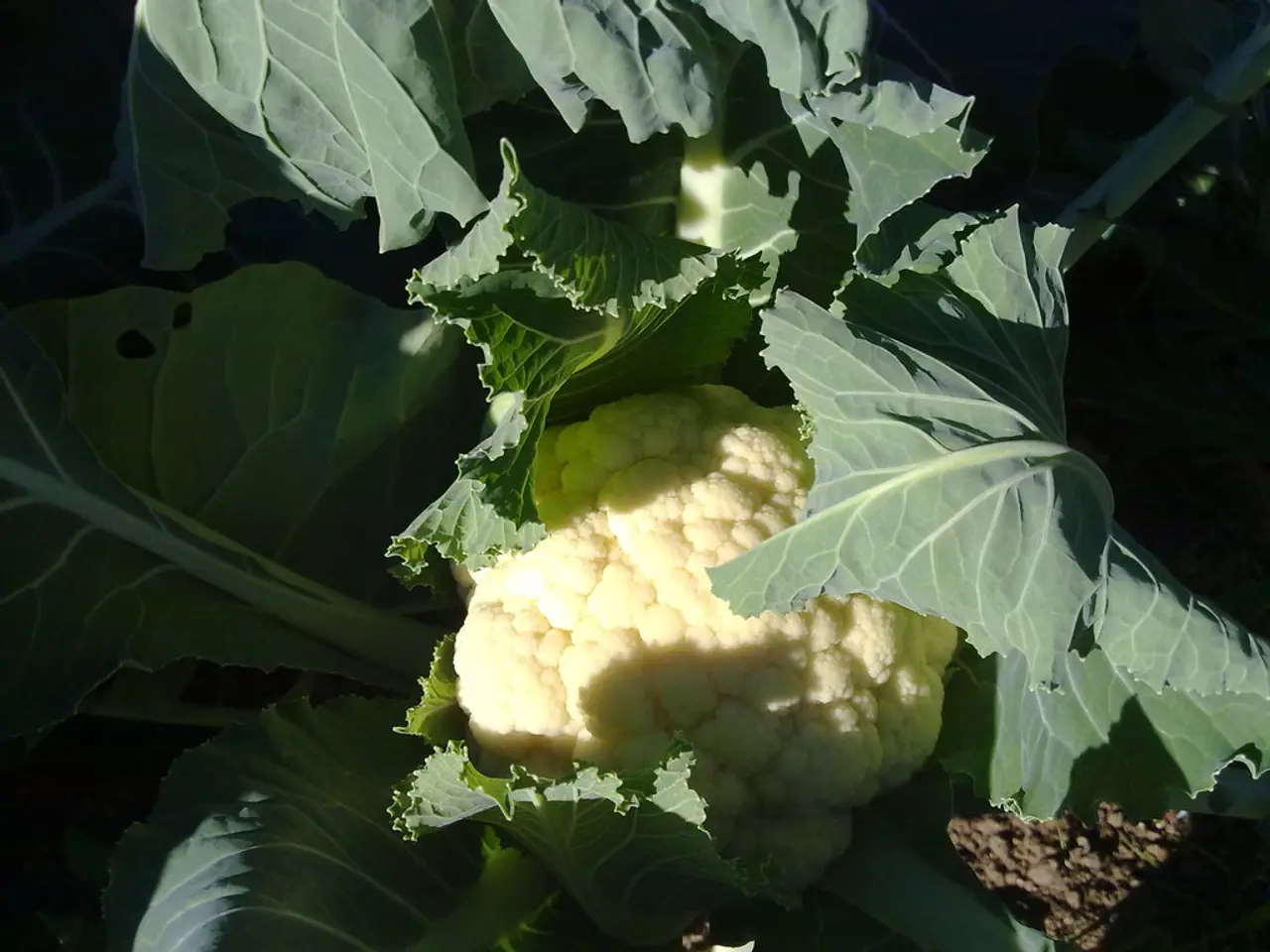Cauliflower Crop Timing: Insight into Sowing and Gathering Seasons
Glen, a gardening expert with over 15 years of experience, shares his insights on growing cauliflower, a versatile and nutritious vegetable.
The Versatile Cauliflower
Cauliflower is a nutritional powerhouse, low in calories but high in vitamins, minerals, and fiber. Its versatile taste and texture make it an ideal ingredient for various dishes, from cauliflower rice to soups and salads.
Caring for Cauliflower
Cauliflower thrives in soil that is rich in organic matter, well-drained, and has a pH between 6.5 and 6.8. It needs evenly moist soil without becoming waterlogged. Nitrogen-rich soil is particularly beneficial for cauliflower growth.
When planting cauliflower, it should be spaced about 18-24 inches apart and rows approximately 3 feet apart.
Harvesting and Storage
The best time to harvest cauliflower is in the morning when the heads are cool and firm, approximately 6 to 8 inches in diameter and creamy white. After harvesting, cauliflower heads should be cooled as soon as possible to maintain freshness. They can be stored in a refrigerator for up to a week, wrapped loosely in plastic.
Common Challenges and Solutions
Downy Mildew leaves a powdery residue on cauliflower leaves. Blanching is necessary for cauliflower cultivation to maintain its white color and prevent bitterness. Aphids are tiny pests that feed on sap in cauliflower plants. Regular inspections and organic controls are necessary to prevent pests and diseases in cauliflower. Black Rot and Clubroot are fungal diseases that affect cauliflower roots and foliage. Cabbage Loopers are green caterpillars that eat cauliflower leaves.
Planting Cauliflower
For a spring harvest, cauliflower seeds or transplants should generally be started indoors 4 to 6 weeks before the last expected frost and then transplanted outdoors once the danger of frost is past. This timing allows development in cool temperatures optimal for cauliflower head formation, typically around 60–100 days depending on the variety.
For a fall harvest, sow cauliflower seeds directly in the garden or transplant seedlings in late summer, approximately 14 to 15 weeks before the first expected frost, so they mature in the cooler fall climate essential to avoid premature "buttoning" and to produce large, compact heads.
Different cauliflower varieties have slightly varied ideal planting times and temperature tolerances:
- Romanesco cauliflower prefers cooler climates and is best planted in early spring or in the fall, maturing in about 75-100 days.
- Snowball cauliflower is versatile and can be grown in both spring and fall due to its adaptability to cool and moderate temperatures.
- Cheddar cauliflower tolerates heat better, making it suitable for warmer climates but still grows well in cooler spring and fall conditions.
- Graffiti cauliflower also tolerates moderate heat and can be planted in both spring and fall seasons.
To summarize:
- Spring planting: start seeds indoors 4-6 weeks before last frost, transplant after frost; suitable for most varieties but Romanesco prefers early spring.
- Fall planting: direct sow or transplant in late summer about 14-15 weeks before first frost to mature in cool temperatures.
Ensuring consistently cool weather (around 60°F) and regular moisture are key to developing quality cauliflower heads in both planting windows.
Glen's latest posts are about Garden Fungicides, Candy Cane Peppers, and Watermelon.
Incorporating cauliflower into one's food-and-drink lifestyle offers a wealth of nutritional benefits due to its low calorie count and high vitamin, mineral, and fiber content. This versatile vegetable's taste and texture make it an ideal ingredient for various home-and-garden recipes, from creative dishes like cauliflower rice to classic soups and salads. By following Glen's tips on caring for cauliflower, growing it at home promises success and delicious results, ideal for those keen on expanding their cooking repertoire.




